Who better to interview a living legend than another living legend? Welcome to the fourth installment of “Talking With Tom”, a Tor.com series in which Tor publisher Tom Doherty chats with one of the many authors and industry icons whose careers he helped launch and shape. Previous installments covered conversations with L.E. Modesitt Jr., Harriet McDougal, and Gregory Benford.
Tom and Brandon discussed the start of Sanderson’s career, his work on the Wheel of Time, his new YA novel The Rithmatist, his writing schedule for the near future, and many other subjects.
Please enjoy this fascinating conversation between Tom Doherty and Brandon Sanderson.
SANDERSON: The first Tor book I read, probably like a lot of readers, was Ender’s Game. That was also the first time I knew that Tor was a thing.
DOHERTY: Yeah.
SANDERSON: I read Ender’s Game right after I became a fantasy and science fiction reader. It was right in that early day, before The Eye of the World was even out. And now we finally have the movie. This has been going on forever, right?
 I remember back in the 90s, when I hadn’t been published yet, writing books but still super fan boy, that one of my friends had an Ender’s Game movie script. I don’t even know if it was the real script, but it passed around from hand to hand. We were all like, “We’ve read the script for the Ender’s Game movie!” Now it’s fifteen years later, and it must have been just wildly different.
I remember back in the 90s, when I hadn’t been published yet, writing books but still super fan boy, that one of my friends had an Ender’s Game movie script. I don’t even know if it was the real script, but it passed around from hand to hand. We were all like, “We’ve read the script for the Ender’s Game movie!” Now it’s fifteen years later, and it must have been just wildly different.
That’s the first time I knew that Tor was a thing. I was like, “Hey, who’s this publisher?” You have the best logo in publishing. I don’t know if you feel that, but the little mountain…
DOHERTY: That was all about visibility. I started out as a salesman, and we used to check stock. I wanted something you could see from a distance. If you have ten letters, they have to be small to fit on the spine of a paperback. If you have three letters with a handsome image, it fits in and you can do it big enough so it’s visible. That was the idea behind Tor: mountain peak, small, nice looking, and just three letters.
 SANDERSON: That mountain peak, as a fantasy reader, actually meant “fantasy” to me. I’d see a lot of the logos, like—well, I’m fine with Bantam, but it’s a chicken, right? Isn’t that Bantam? I didn’t see chicken and think, “Oooh, fantasy novel.” With the Tor mountain peak, we’ve got the Dragonmount, we’ve got the Mines of Moria with the mounds… It’s just so evocative of the genre. I’d see it and think, “Oh, fantasy novel.” So that was very smart.
SANDERSON: That mountain peak, as a fantasy reader, actually meant “fantasy” to me. I’d see a lot of the logos, like—well, I’m fine with Bantam, but it’s a chicken, right? Isn’t that Bantam? I didn’t see chicken and think, “Oooh, fantasy novel.” With the Tor mountain peak, we’ve got the Dragonmount, we’ve got the Mines of Moria with the mounds… It’s just so evocative of the genre. I’d see it and think, “Oh, fantasy novel.” So that was very smart.
DOHERTY: It was kind of lucky, because I didn’t mean it especially for fantasy. I wanted it to be something handsome and visible and symbolic of the kind of things that we wanted to do. In the beginning we were planning to do history: past, present, and future. You know, starting with the prehistoric, which to me is science fiction, because it’s an extrapolation from anthropology, rather than from physics going forward into the future. The far past leads you toward the present, and it leads you to a time when European civilization, which was industrial and much more advanced, met Stone Age North American. The same editors who are comfortable with “human meeting alien” are comfortable with the clash of such different civilizations.
SANDERSON: I never heard it described that way. That’s pretty cool.
DOHERTY: Then, from the other end, we did near?future science fiction. Other people began doing it and calling it techno?thriller.
SANDERSON: Right. The Michael Crichton sort of thing.
DOHERTY: Yes. Michael Crichton was the beginning, really, and it sold better as a thriller.
SANDERSON: If you look back at it, James Bond has always been slightly science fiction?y, near future?y science fiction. People who would think, “Oh, science fiction, I don’t do that” would pick up a James Bond novel and read it.
DOHERTY: That’s how we created [Tor sister imprint] Forge. We were doing these near-future science fiction novels that weren’t getting reviewed, because the people who’d review them were the thriller reviewers.
We had a book by Paul Erdman, not really a techno-thriller, more a financial thriller. The San Francisco Chronicle had always been very good to him, but they totally ignored this book. We contacted them and said, “Look, far be it from us to suggest who to review, but we were just kind of surprised that you would skip Paul Erdman, when you’ve always reviewed him so well in the past.” And they said, “Oh, we would never skip Paul Erdman. Let us look into that.” When they came back to us, they said, “Oh, we got the book from Tor and sent it to our science fiction reviewer. He put it aside as not for him.” So that’s why we made Forge.
Later, Brandon discussed how he discovered the Wheel of Time books as a young reader, and how it led to him wanting to be published by Tor.
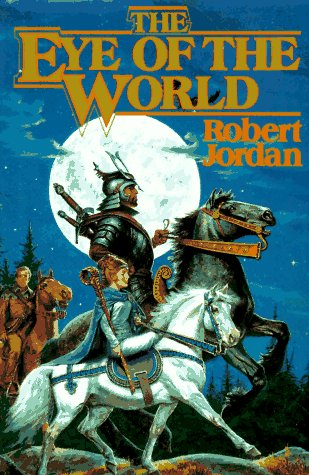 SANDERSON: I remember those little half books of The Eye of the World. I was already a fan by then, but those became collectors’ items among the fans.
SANDERSON: I remember those little half books of The Eye of the World. I was already a fan by then, but those became collectors’ items among the fans.
DOHERTY: We gave away over a million of them. I figured anybody who read that couldn’t stop.
SANDERSON: Wow. A million of them? Really. That’s a lot.
DOHERTY: It was. It wasn’t quite half of the novel. It was a natural break that Harriet agreed on.
SANDERSON: It was Shadar Logoth, I seem to recall. Wow. A million. That’s crazy. I mean, most authors don’t have a million books in print, and Robert Jordan had a million of his promo books in print. That’s just crazy. You did that right around the third book, wasn’t it?
DOHERTY: Yeah. The first book sold 40,000 trade paperbacks. We launched it as a trade paperback, because not many people were doing major promotions on trade paperbacks in those days. We ended up selling 40,000 of the trade.
SANDERSON: Which is really good.
DOHERTY: Which was very good, yeah. I had the hardest time with the sales force when, on the third book, I wanted to make the major promotion in hardcover. They said, “Well, you’ve got such a winner. Why would you want to change?”
SANDERSON: See, as a reader, when I picked up The Eye of the World, I picked it up in mass market paperback. My bookstore first got it in mass market. I was just a new reader, and all the books that I had read up to that point had been series in progress that people handed to me, like David Eddings. Fantastic stuff, particularly for a teen boy. And Tad Williams, and Terry Brooks. I found the Dragonriders on my own and loved those, but it was already done. I was on the lookout for something to discover then. I didn’t want to always just be handed something that everyone else loves. “Where’s my series?”
When I saw The Eye of the World, I was on the lookout for big, thick books, because you got more bang for your buck. As a kid who didn’t have a lot of pocket change, that was an important thing. So I bought The Eye of the World, and I read it, and I said, “There’s something really special here. I think this is going to be mine.”
Then my bookstore got the second one in trade paperback, and I said, “A?ha! I’ve spotted it!” Because as a kid, that told me that this book was popular enough that my little bookstore was willing to order in the trade paperback. Then, when the third one came out in hardcover, I thought “He’s made it, and I called it.” I was like the Wheel of Time hipster, right? “From the get?go, this is my series and I found it, and all you other people didn’t see it in the beginning.” Even still, I’ll go on signings and ask, “Who picked it up in 1990?” and we’ll get a cheer for those of us who waited 23 years for the series to end.
DOHERTY: That’s great.
SANDERSON: When I started wanting to get published and was sending books out, there were really only two publishers I was sending to. One was you, as Robert Jordan’s publisher, and the other one was Daw, because I really liked how Daw handled… Well, to be honest, I sent to them because they got Michael Whelan covers a lot, and I liked Michael Whelan covers.
When Moshe [Feder, Sanderson’s editor] finally called me, my agent wanted me to negotiate and take it to other publishers to see who would offer more. I wouldn’t let him, because I thought, “Once you’re at Tor, you don’t go anywhere else. You go with Tor. Once you’re at the fancy French restaurant, you don’t go down and see if there’s a better deal at McDonald’s. Maybe there will be, but you end up with McDonald’s instead of the fancy nice restaurant. Instead of getting a steak, you end up with a burger.” I already had the steak, so I went with Tor.
And now, sitting in this room… The readers can’t see this, but we’re in the prow of the Flatiron Building. It’s one of the most famous buildings in the city. This was the Daily Bugle, right?
DOHERTY: Yep.
SANDERSON: If you go watch the Spiderman movies, you can see. I’ll always be like, “There’s Tom’s office.” I’m right at the tip of it, just looking out at the city. It’s the coolest office I’ve ever been in.
DOHERTY: They tell me it got trashed in Godzilla.
SANDERSON: Godzilla reached in the window and pulled something out.
DOHERTY: Apparently they shot some rocket at him. [Note: here’s the scene on YouTube.]
SANDERSON: It’s looking remarkably well put together for having been blown up.
Brandon and Tom discussed the early days of the Wheel of Time series, Brandon’s own experience as a new Tor author, and how much he learned from Robert Jordan and George R.R. Martin in writing the Stormlight Archive.
SANDERSON: So after Ender’s Game, the second Tor book that I can remember reading was The Eye of the World and the other Wheel of Time books. There were all these rumors out there about how many books it was planned to be and what it was originally pitched as. Tom, I think we need to hear it from your mouth: the first-hand witness of that pitch when James Rigney came in. Was it this office right here?
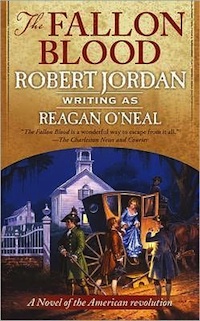 DOHERTY: Well, actually we’d already done three books with him. The Fallon Blood, The Fallon Pride, and The Fallon Legacy. He did them under a different pen name.
DOHERTY: Well, actually we’d already done three books with him. The Fallon Blood, The Fallon Pride, and The Fallon Legacy. He did them under a different pen name.
SANDERSON: Right. Reagan O’Neal.
DOHERTY: They had started out to be one book. He was going to do a big historical novel of the American Revolution, but it ended up being three fat books.
When he came in and said he wanted to do a big epic fantasy novel, we said, “Well, a big epic fantasy?” He said, “Well, maybe it’ll be a trilogy.” So I suggested a six book contract, and when he said no I said “Okay, you know if you finish it in three, we’ll just do a different trilogy.” He said, “Well, all right, if you insist.”
SANDERSON: Didn’t you tell me that, when he gave the pitch on the first book, it really ended where the third book now ends, with the sword that’s not a sword being taken from the stone that’s not a stone.
DOHERTY: Well, he didn’t actually, no. He didn’t give me a very detailed outline, but I didn’t really need one because he’d done such a great job with the Fallon trilogy and Harriet [McDougal, Robert Jordan’s widow and editor] was sold on it. Harriet had edited the Fallon trilogy.
SANDERSON: Right. She tells the story that she called you after reading the few chapters of The Eye of the World that she’d read and said, “You need to look into this thing, because either I’ve fallen into the wife trap after all these years, or this is the best thing I’ve ever read.” [Note: Harriet McDougal told the same story during her conversation with Tom Doherty.]
DOHERTY: I don’t remember her saying that, but she did call me and say, “Hey, this is special.” And I read it, and it was special. We did some things with those books that were pretty major for a small, independent company.
This led to a discussion about how Brandon Sanderson, then a relatively new author, was picked to complete the Wheel of Time series, and about how Sanderson’s work on the Wheel of Time helped him when writing The Way of Kings.
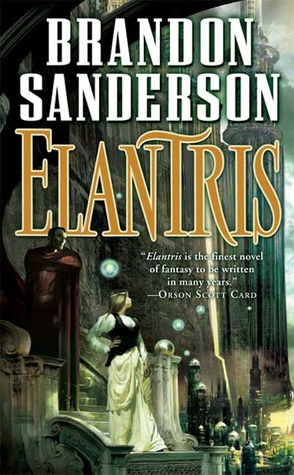 SANDERSON: I remember coming to see you the very first time, when Elantris was just barely out. I’ve always been impressed, because I was a nobody and you had read my book. There can’t be many other publishers of major companies who read as many of the books as you do. Why do you do that?
SANDERSON: I remember coming to see you the very first time, when Elantris was just barely out. I’ve always been impressed, because I was a nobody and you had read my book. There can’t be many other publishers of major companies who read as many of the books as you do. Why do you do that?
DOHERTY: Well, if I’ve got an editor working for me, it’s because I believe that that editor really has something to contribute. Moshe [Feder] was so enthusiastic about Elantris that I couldn’t not read it. And when I read it, I loved it.
I think it’s pretty clear we really loved what you were doing. I may be a little prejudiced as his publisher, but I think Robert Jordan really created one of the great epic fantasies of all time—a magnificent series, and you just finished it magnificently. We never could have turned it over to anybody that we didn’t have tremendous confidence in, Brandon. We loved what you were doing. It said to us, “Yes, he can do this.”
SANDERSON: If you weren’t the type of publisher who read all the books, you couldn’t have fingered someone like you did with me. You couldn’t have said, “Give him to Harriet.” I remember she said she asked you to send her some of my books. And you said, “Well, I’ll send you Mistborn instead of Elantris. I’ve read them both and Mistborn is a better novel.”
DOHERTY: Yep.
SANDERSON: Elantris is a first novel. The second novel’s better. You knew to send her Mistborn, and it’s that book that made her choose me. In a lot of ways, if you hadn’t been on top of things, it may not have happened the way it did.
DOHERTY: Well, Mistborn’s really great. We thought of it as a trilogy, but then you wrote more.
SANDERSON: Yeah, I’m in the Robert Jordan tradition, right?
DOHERTY: You are. But, anyway, it’s smaller scale than The Way of Kings. The Stormlight Archive is such a natural progression for you, I think. You’ve told me you picked up foreshadowing from Jordan.
SANDERSON: Yep. One of the main things I learned from him.
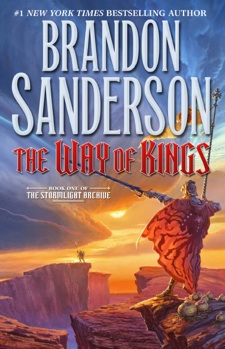
DOHERTY: If I recall, you said that you’d actually written the first draft of The Way of Kings in 2003, and that you had ideas for it way back to high school, and that when you and Moshe were talking about what to do after Elantris, you weren’t completely happy with it.
SANDERSON: It wasn’t good enough yet. I had all these dreams, these aspirations of doing something big and momentous like the Wheel of Time, but I couldn’t do it yet. I tried, and I couldn’t. The problem was juggling the viewpoints, and the foreshadowing.
What I learned, when I was rereading the Wheel of Time to work on the series, was that Robert Jordan kept everything really quite focused for the early books of the series. He expanded it slowly. He didn’t hit you in the face with twenty viewpoints.
We had something like a seventy viewpoint chapter in the last book. That’s something you have to earn, across years of writing. You have to get the reader invested in the main characters. Without that investment in the main characters, I wouldn’t have cared enough to pay attention to the side characters.
It was a matter of scale and scope and building upon itself, rather than just trying to start off with this massive book that gets everyone lost. That’s one of the big things I did wrong in the original write. I had six main characters with full arcs and full viewpoints. It was too much. You couldn’t really attach to any of them. In the revision I cut that down to three, which really focused the book. It let me give the passion and focus on these three characters, so that you felt it when you read the book.
DOHERTY: Yeah.
SANDERSON: Working on those Robert Jordan books did that for me. Writing The Gathering Storm in specific was like going to the gym and having to lift some really heavy weights you aren’t used to. Either you get used to it or they crush you. I had to get used to it very quickly. That taught me a lot. I grew more that year than I had at any point in my writing career, except maybe the very first year I was writing.
DOHERTY: When I look at the Stormlight Archive, you also like to jump around like George R. R. Martin. These are the two great epic novelists of our day, Martin and Jordan.
SANDERSON: That’s really one of George’s big strengths: jumping to keep the pacing up. But even he didn’t start with a lot of characters at the beginning of the first book. I’ve actually tried to learn from Robert Jordan and George R. R. Martin and say, “Okay, what are the things they had to deal with? There are growing pains when you’re creating a series this long. There are certain things that are difficult to do. What looks like it was difficult to do for them, and what can I learn from them?”
I often say that I had a big advantage over Robert Jordan: I’ve been able to read Robert Jordan, and he couldn’t, at least not in the same way. Reading Robert Jordan showed me what happens when you create a big series. Nobody did this before him, right?
DOHERTY: No.
SANDERSON: There were no massive epic fantasy series of that scope at the time. You have things that are episodic, like [Roger Zelazny’s] Chronicles of Amber, which is fantastic, but it’s thin little episodes. You have nice trilogies like Tad Williams’ Memory, Sorrow and Thorn. But you don’t have anything with the scope of the Wheel of Time.
I was able to watch and benefit from what Jordan did. After the fact, he said “You know, I don’t think I would have done book ten the same way if I had it to do over again. I learned this and I learned that.” Being able to pay attention to those things allows me to hopefully use that.
When I went into The Way of Kings, I saw what George R. R. Martin does, jumping to these other places and giving you a scope of the world. It makes it feel epic. But if you spend too much time on jumping to those places, you get distracted and can’t focus.
So I did this thing where I would end a section of The Way of Kings and do what I call interludes, where we jump around the world. If this is the sort of thing that doesn’t interest you, you can skip those interludes and go on to the next part, where we get back to the main characters. But there are these little stories in between each part, showing the scope: “Here’s what’s going on around the world, now we focus.” You get distracted for a little bit, after a natural end point, then we come back to the main story.
That restrains me. It makes me say, “Okay, I can only put this many of these chapters in.” It makes me keep my eyes on the main characters more. One of my main goals with writing this series is being able to juggle that. It’s hard.
DOHERTY: I think you’ve done a particularly great job of still having that broad, epic feel with fewer characters. You only have the three principals: Kaladin, Shallan, and Dalinar. Jordan had six, maybe eight depending on how you count them.
Next, the conversation turned to Brandon Sanderson’s latest novel, the Young Adult fantasy The Rithmatist.
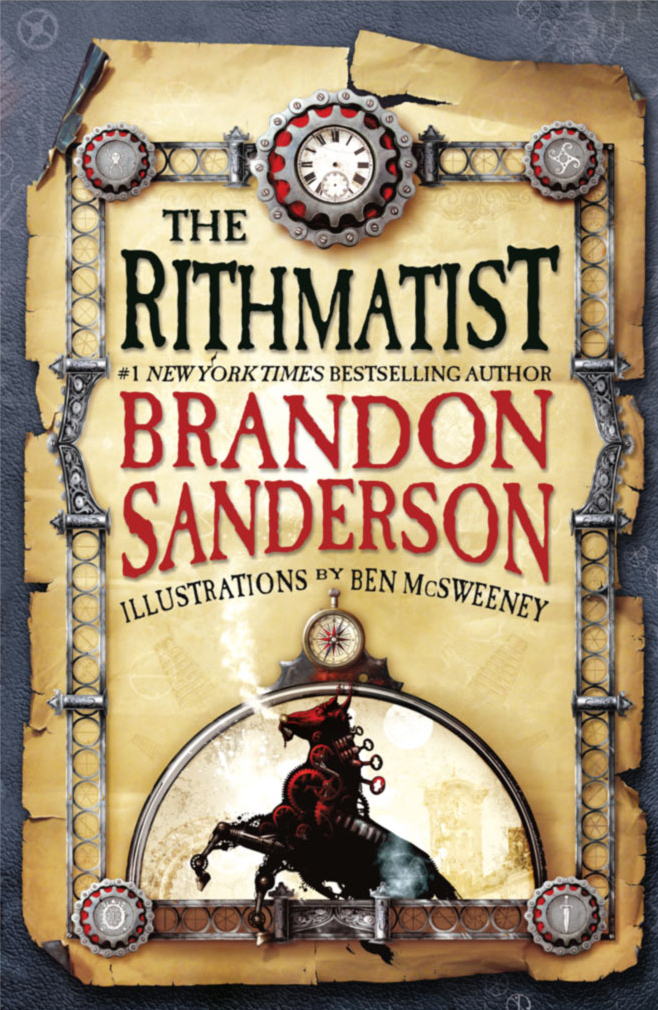
SANDERSON: I don’t know if you know the history of The Rithmatist.
DOHERTY: No, I don’t.
SANDERSON: In 2007, before Harriet [McDougal] called me about the Wheel of Time, I was writing a book that wasn’t working. It was called Liar of Partinel. You’ve never seen it. No one’s ever seen it. It just happens to writers: once in a while you write a book and you know something deep is wrong with it, like it’s fundamentally broken in some way. I was bored while writing it. This wasn’t writer’s block—that’s something different. Across two months, every chapter I would go through the motions, but I wouldn’t feel any passion to the chapters. Eventually, halfway through, I said, “I just can’t do this anymore. I need something I’m excited about.”
I sat down and started sketching. I don’t do a lot of drawing. The last time I did some sketching that started a book was Elantris, where I did all the symbols for the Aons. I just started sketching, and I started imagining this story where people would duel with these chalk circles. You draw this chalk circle around yourself, and then you draw little beasties, little creatures that would crawl across the ground and attack your opponent’s circle, and when your circle got breached that was the end of the thing. It’s like a magical version of a tower defense game or something like StarCraft. I imagined these kids playing this game and thought, “Where do I go from this?”
It was one of these purely creative experiences where I was just drawing and making notes at the side and coming up with things in order to not have to do this other book, which I found so boring. Over the course of a month, instead of doing what I was supposed to be doing, I wrote The Rithmatist. It’s one of those books that just flowed out of me. It just came out like it is, basically, right now. We’ve done revisions and so on, of course, but the revisions are all minor.
It’s hard to even explain why it happened, but it came from those sketches. I just started drawing.
When I finished The Rithmatist, Harriet called me [to ask Sanderson to complete the Wheel of Time series]. I was really relieved that I didn’t have to go back to that book that I didn’t like anymore. I turned my attention toward the Wheel of Time.
DOHERTY: I love The Rithmatist. Great system of magic. You do these unique systems of magic, and yet you say all your worlds are related.
SANDERSON: Yes, they are all related, but I didn’t connect The Rithmatist to that.
DOHERTY: Oh, okay.
SANDERSON: Because The Rithmatist has connections to Earth, and I don’t want the Earth books—anything on Earth—to be related to the big system of everything else, because it adds too much. Does that make sense? It adds too much baggage.
So The Rithmatist is its own contained world. I wanted to play with Earth history. I just wanted to do wacky things. The JoSeun Empire, which is the old name of one of the Korean dynasties, has conquered Europe at various points, and so European food is very Asian influenced. You’ll eat spaghetti with chop sticks, and things like that.
I’m not trying to do true alternate history. True alternate history is when people say, “What if this arrow had hit this guy in this battle and instead . . . ?” That’s not what I’m doing. What I’m doing is alternate world, where we’re reimagining everything and just letting it be fun.
I’ve shrunk the planet. It’s much smaller. You can take a train to Europe. The United States are a bunch of islands instead, and people duel with chalk, and my hometown in Nebraska is the source of all evil in the world, with a magical tower the monsters come out of.
By the way, all the Rithmatic defenses are named after friends of mine from Nebraska, or people I knew, or things from Nebraska history. There’s something called the Osborne Defense. Well, if you’re from Nebraska, you know that Tom Osborne was the great coach of the Nebraska Cornhuskers for many years. All the defenses are named after things like that, just for fun.
DOHERTY: How about your parrot?
SANDERSON: My parents?
DOHERTY: Parrot. Didn’t you have a parrot in there?
SANDERSON: I did. Well, it’s a cockatiel. He’s called Beaker, because he sounds like the Muppet. All sorts of random things from my life. Like Professor Layton, the math teacher, is a good friend of mine who was the best man at my wedding and who is a math teacher in real life. You know, you can do fun stuff like that in a book set in our world that’s not our world, things that you just can’t do in something like The Way of Kings where you want it to be a little more serious and epic. It has to take itself seriously. You’ve got to maintain continuity. Oftentimes, when I’m escaping from something like that, I write something like The Rithmatist, which I don’t need to be quite as serious with. In some ways, it’s a release valve from writing the big epics. They’re my true love, but there are things you can do in a book like The Rithmatist that you just can’t do in The Way of Kings.
Even one of the most prolific authors in the genre occasionally gets prodded by his publisher about his writing schedule…
DOHERTY: How do I get you to write one book in the Stormlight Archive every year?
SANDERSON: Is this the part where I get in trouble for not having the second book in to you yet? I keep promising it, and I’m usually very good at meeting my promises on deadlines, but I’m touring so much this year. I’ve had to tell the fans, “I have to support the books that are out there, and you all want to see me, and you all invite me to conventions.” I have to learn how to manage that better, because since January, I’ve basically only been home for about two months. I’m out there all the time, all over the place.
It’s tough. I have to write. I had to write 3,000 words on the plane yesterday, and writing on the plane is not easy, but I’m going to have to write a big chunk of this book on this tour. Grit my teeth and go.
DOHERTY: I don’t want to wait myself.
SANDERSON: I’m trying. I’m trying, Tom. If I finish this one in the next couple of months, it will have been one year since I started writing it. That makes it more reasonable that we’ll get them every year. I really think every 18 months is more likely, but I don’t want the readers to have to wait. You know, as much as I respect the guy, I don’t want to do a George R. R. Martin thing to people, where it’s four years between books. That’s just too long to keep all these characters for a big epic fantasy in mind.
DOHERTY: Yeah.
SANDERSON: So hopefully, one every year, two every three years, will continue to be my goal for this series.
DOHERTY: Beautiful. Do you expect any crossover between worlds ever at any time?
SANDERSON: Oh yes, definitely. In fact, if fans go read right now, there’s crossover.
DOHERTY: There is?
SANDERSON: One of the characters from Elantris is in The Way of Kings, just in one chapter. And one of the characters from Mistborn is in The Way of Kings. There is crossover. It’s never going to be the forefront of the series. I don’t want you to have to have read Mistborn to enjoy the Stormlight Archive, but if you have, and you really want to get into these things, you can find all the clues connecting all the worlds. It’s a story hidden behind the story. Someday I’ll write its own dedicated series for it. But again, it’s important for me that I make sure that fans don’t have to have read my entire breadth of work in order to enjoy a given series. It has to stand on its own.
DOHERTY: Well, I think we’ve got something special going. It isn’t often I can’t wait for the next book. I’ve got too much to read.
SANDERSON: Well, thanks Tom. That makes me feel pretty awesome.
Tom Doherty has been a central figure in genre publishing for decades. He is the founder, President and Publisher of Tom Doherty Associates, which publishes books under the Tor, Forge, Orb, Tor Teen and Starscape imprints. Tor Books, which he founded more than three decades ago, has won the Locus Award for Best Publisher every single year since 1988.
Brandon Sanderson is one of the most successful and prolific fantasy authors to enter the genre in decades. His works include Elantris, the Mistborn trilogy, Warbreaker, The Way of Kings, and the new YA novel The Rithmatist. Sanderson was also handpicked to complete Robert Jordan’s Wheel of Time series, with A Memory of Light, the final volume in the series, arriving earlier this year.
Stefan Raets reads and reviews science fiction and fantasy whenever he isn’t distracted by less important things like eating and sleeping. You can find him on Twitter, and his website is Far Beyond Reality.




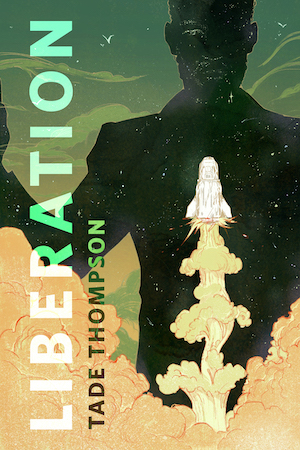





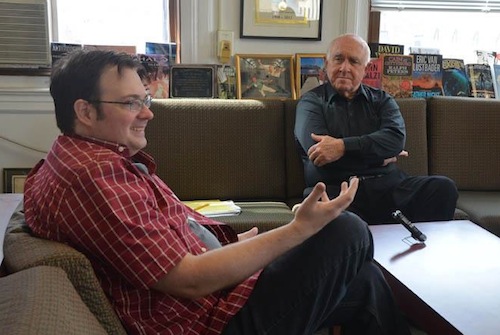
Professor Layton is also an awesome series of riddle/puzzle solving for the Nintendo DS (which also had an animated movie made). Sanderson making his hometown the source of EVIL made me laugh out loud.
Great interview with one of my most favorite authors. I have read all Brandon’s books multiple times and I never picked up on the cross over charaters from Mistborn and Elantris. Does anyone know which characters and what parts of WoK they show up in?
@2:
http://coppermind.net/wiki/Seventeenth_Shard
If you want spoilers, this will tell you.
The main crossover character is Hoid, also called Wit in WoK. There are others, like Demoex (sp?) from Mistborn, who are hunting him down. If you want to know a bit more of the details, you might enjoy the Way of Kings reread Tor is doing right now.
The main crossover is Hoid. He’s probably in all shardworld books. Read all Sanderson books, read them minutely, scrutinise them, to spot him…
What a fun read! This was a joy to devour.
Thank you, Tor.
This was truely the BEST interview! I learned so much about them both! (Tom and Brandon) I’ve been a fan of Tad Wiliiams since the beginning, and that’s when I learned about Tom and TOR. Thanks to you both!
“We had something like a seventy viewpoint chapter in the last book. That’s something you have to earn, across years of writing. You have to get the reader invested in the main characters. Without that investment in the main characters, I wouldn’t have cared enough to pay attention to the side characters.”
This is EXACTLY why I had trouble with the early moments of The Dragonbone Chair. Tad Williams is a good author, but he shifted off to some unknown character’s viewpoint at *exactly* the wrong time.